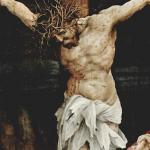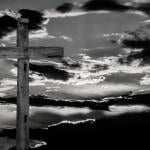John Ruskin was the main art critic of his time; he was an artists himself, and also wrote on a variety of other topics, especially on the state of English politics and economy. He abandoned explicit attachment to Evangelical Christianity but remained deeply indebted. He provides an excellent example of the persistence of typological structures of thought into the latter part of the nineteenth century, when orthodox Christianity was in something of a decline.
In his discussion of the paintings of JMW Turner in Modern Painters, Ruskin raises a fundamental question about painting: “what is the true dignity of color?” Turner’s achievement is found specifically on this point. Ruskin claims that “Other painters had rendered the golden tones, and the blue tones, of sky; Titian especially the last, in perfectness. But none had dared to paint, none seem to have seen, the scarlet and purple.”
But it wasn’t just in color itself that Turner excelled. He was especially skilled in working out colors in shadows. “His most distinctive innovation as a colorist was his discovery of the scarlet shadow. ‘True, there is a sunshine whose light is golden, and its shadow gray; but there is another sunshine, and that the purest, whose light is white, and its shadow scarlet.’ This was the essentially offensive, inconceivable thing, which he could not be believed in.”
Turner’s scarlet was distinctive, and this is important because the range of red is the most subtle of the primary colors: “red is an entirely abstract color. It is red to which the color-blind are blind, as if to show us that it was not necessary merely for the service or comfort of man, but that there was a special gift or teaching in this color.”
When he explains why red is such a fundamental color, Ruskin turns to Leviticus: “color generally, but chiefly the scarlet, used with the hyssop, in the Levitical law, is the great sanctifying element of visible beauty inseparably connected with purity and life.” He is referring to the rite for the concoction of the water for purification, found in Numbers 19. Scarlet material is thrown on a fire with hyssop, and together they are burned with a red cow. The ashes are mixed with water and the mixture is used to cleanse from corpse defilement. Red thus is a sign of purification, and also a sign of resurrection, a return to life.
In a lengthy aside, he explains that color is less important to a painter than form. If forced to choose, the painter should master form. What makes the leopard isn’t the spots on his skin; the form of the leopard designates the existence, the being of the leopard. The color of his skin is the “purifying” or “sanctifying” element.
He further justifies this linkage of color, and red specifically, with purity, by reference to the rainbow.
“The cloud, or firmament, as we have seen, signifies the ministration of the heavens to man. That ministration may be in judgment or mercy—in the lightning, or the dew. But the bow, or color, of the cloud, signifies always mercy, the sparing of life; such ministry of the heaven, as shall feed and prolong life. And as the sunlight, undivided, is the type of the wisdom and righteousness of God, so divided, and softened into color by means of the firmamental ministry, fitted to every need of man, as to every delight, and becoming one chief source of human beauty, by being made part of the flesh of man;—thus divided, the sunlight is the type of the wisdom of God, becoming sanctification and redemption. Various in work—various in beauty—various in power.
“Color is, therefore, in brief terms, the type of love. Hence it is especially connected with the blossoming of the earth; and again, with its fruits; also, with the spring and fall of the leaf, and with the morning and evening of the day, in order to show the waiting of love about the birth and death of man.”
Perhaps this is no more than an extended metaphor. But it seems more integral to Ruskin’s theory of color and art. How does he arrive, after all, at the notion that color is “sanctifying” and “purification”? How does he know that color is linked to love? Those suggestions seem to arise from biblical texts. And the more extended understanding of color as an image of the refraction of divine love is clearly rooted in this meditation on the rainbow. Color as a representation of the “ministrations of heaven to earth”; the difference between the un-refracted light of judgment and the refracted light of mercy; the link between color and love – all these depend on an extension of the scene in Genesis 8 where the rainbow is set in the sky as a memorial of God’s mercy.
The rainbow, unlike many biblical types, is rooted in a natural phenomenon rather than an “accident” of history. As George Landow puts it (Victorian Types, Victorian Shadows, 112-3): “The rainbow, a sign of God’s covenant with man, was interpreted by Christian exegetes as a type of Christ, who both brought the new covenant of grace and was Himself its sign. What distinguishes the rainbow from almost all other types is that it is a natural phenomenon, not a unique event or person, which prefigures Christ. . . . it serves as a major example of something which functions typologically in both of God’s books – the Bible and the Book of Nature.” Ruskin pushes this understanding further, finding aesthetic significance in the specifics of the natural phenomenon of the rainbow, interpreted through the lens of the covenantal interpretation.
Ruskin returns to the rainbow in another discussion of color in the Stones of Venice. He explicates his claim that “I know no law more severely without exception than this of the connexion of pure color with profound and noble thought.” Why is there such a connection between color and nobility? There is, Ruskin says, “a noble reason for this universal law.” When he explains this “noble reason,” he resorts to the Bible:
“In that heavenly circle which binds the statutes of color upon the front of the sky, when it became the sign of the covenant of peace, the pure hues of divided light were sanctified to the human heart for ever; nor this, it would seem, by mere arbitrary appointment, but in consequence of the fore-ordained and marvellous constitution of those hues into a sevenfold, or, more strictly still, a threefold order, typical of the Divine nature itself. Observe also, the name Shem, or Splendor, given to that son of Noah in whom this covenant with mankind was to be fulfilled, and see how that name was justified by every one of the Asiatic races which descended from him. Not without meaning was the love of Israel to his chosen son expressed by the coat ‘of many colors’; not without deep sense of the sacredness of that symbol of purity, did the lost daughter of David tear it from her breast:—’With such robes were the king’s daughters that were virgins apparelled.’ We know it to have been by Divine command that the Israelite, rescued from servitude, veiled the tabernacle with its rain flashed through the fall of the color from its tenons of gold.”
This dense passage begins from Genesis 8, when by God’s promise the colors of the rainbow were “sanctified to the human heart.” But this wasn’t an arbitrary, nominalist assignment of meaning; the threefold order of the rainbow was rooted in “divine nature itself.” Joseph’s robe was a sign of his father’s favor; David’s daughters exhibited their status in rainbow coats; the tabernacle was another rainbow, forming the sanctuary where the Lord would meet with his redeemed son Israel, clothed like Joseph in a coat of many colors.
The style of citation here doesn’t seem merely illustrative. The Bible provides the “noble reason” for a universal association between color and nobility. Typologically read, the colors of the rainbow provide a key to understanding the impact of color in painting.












